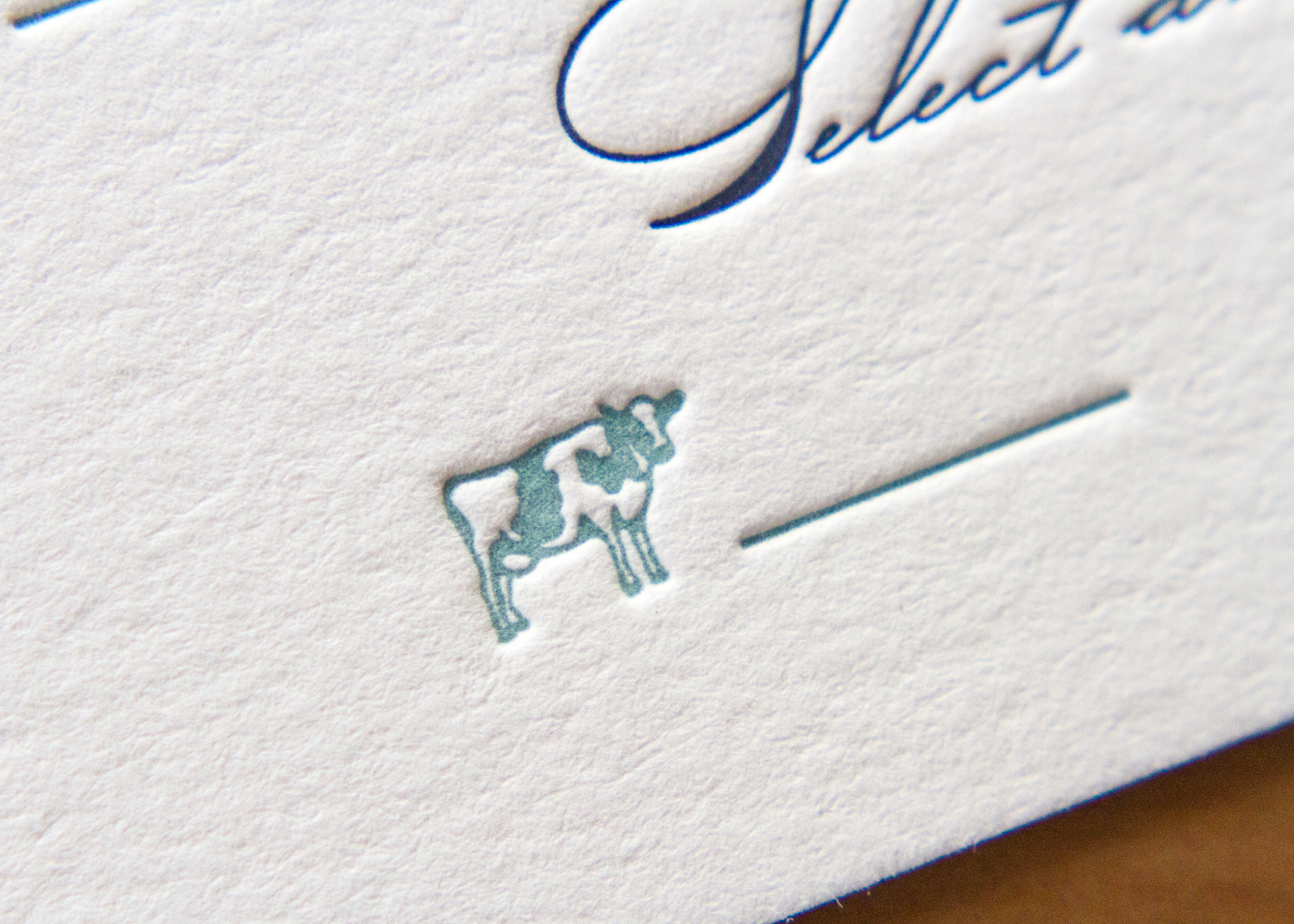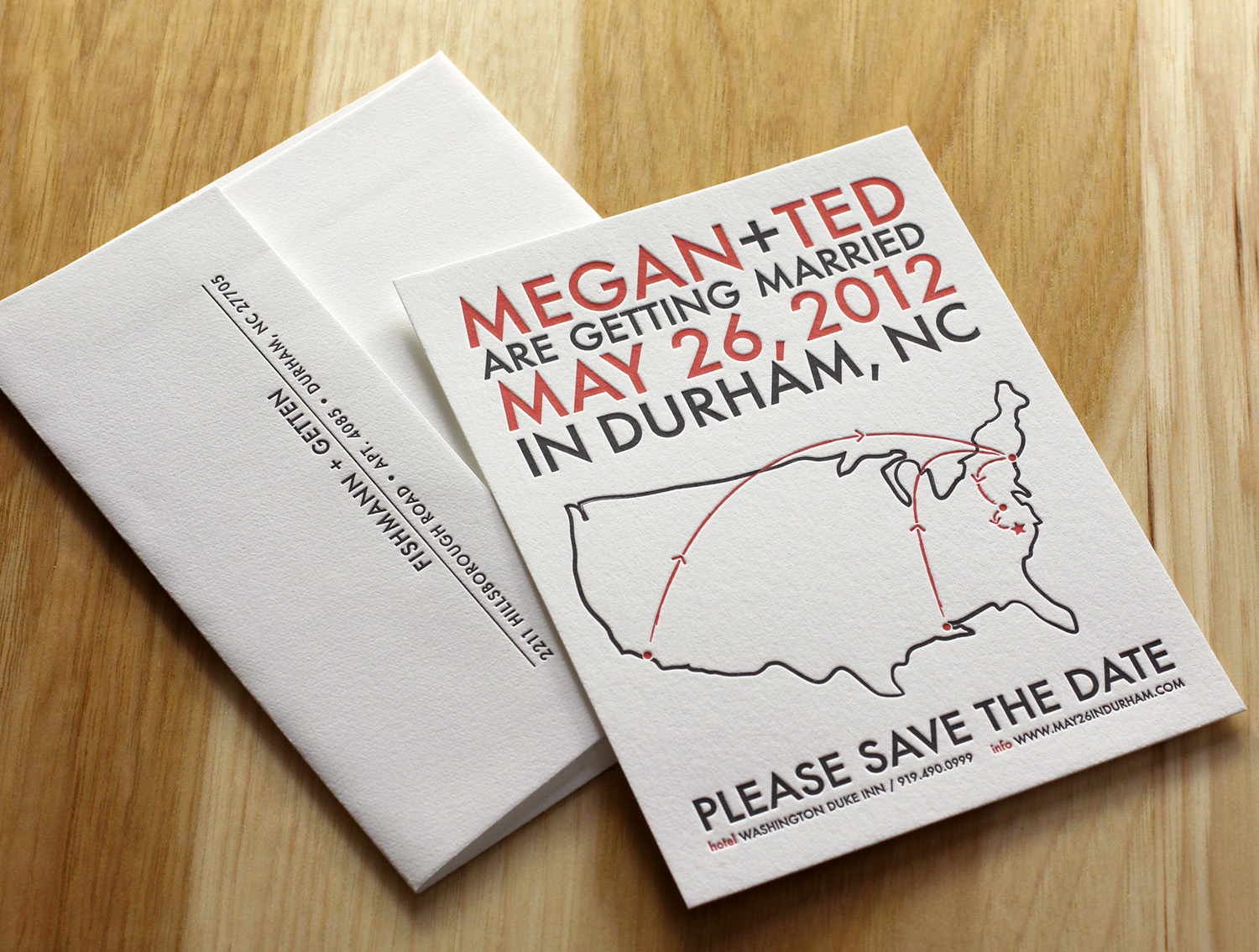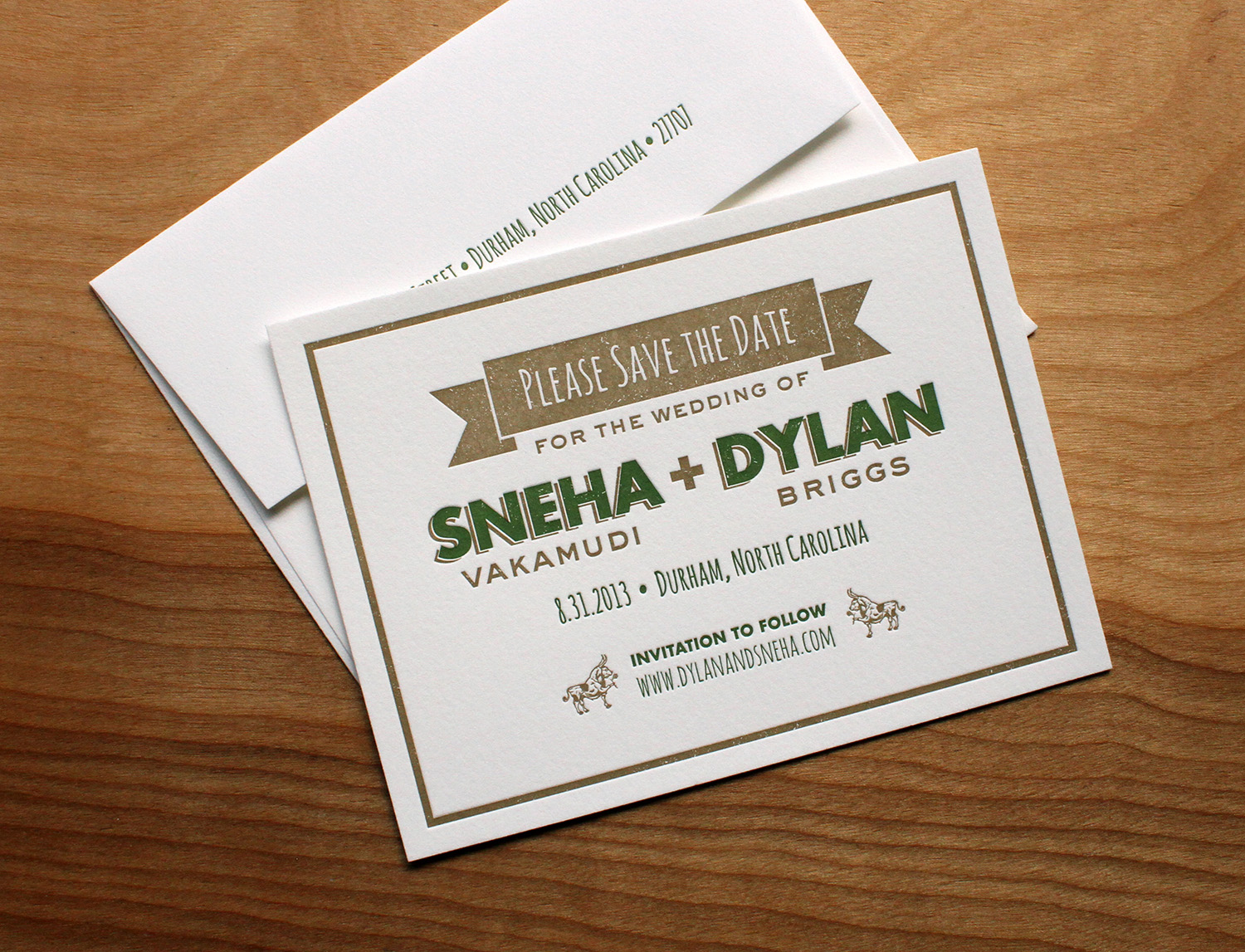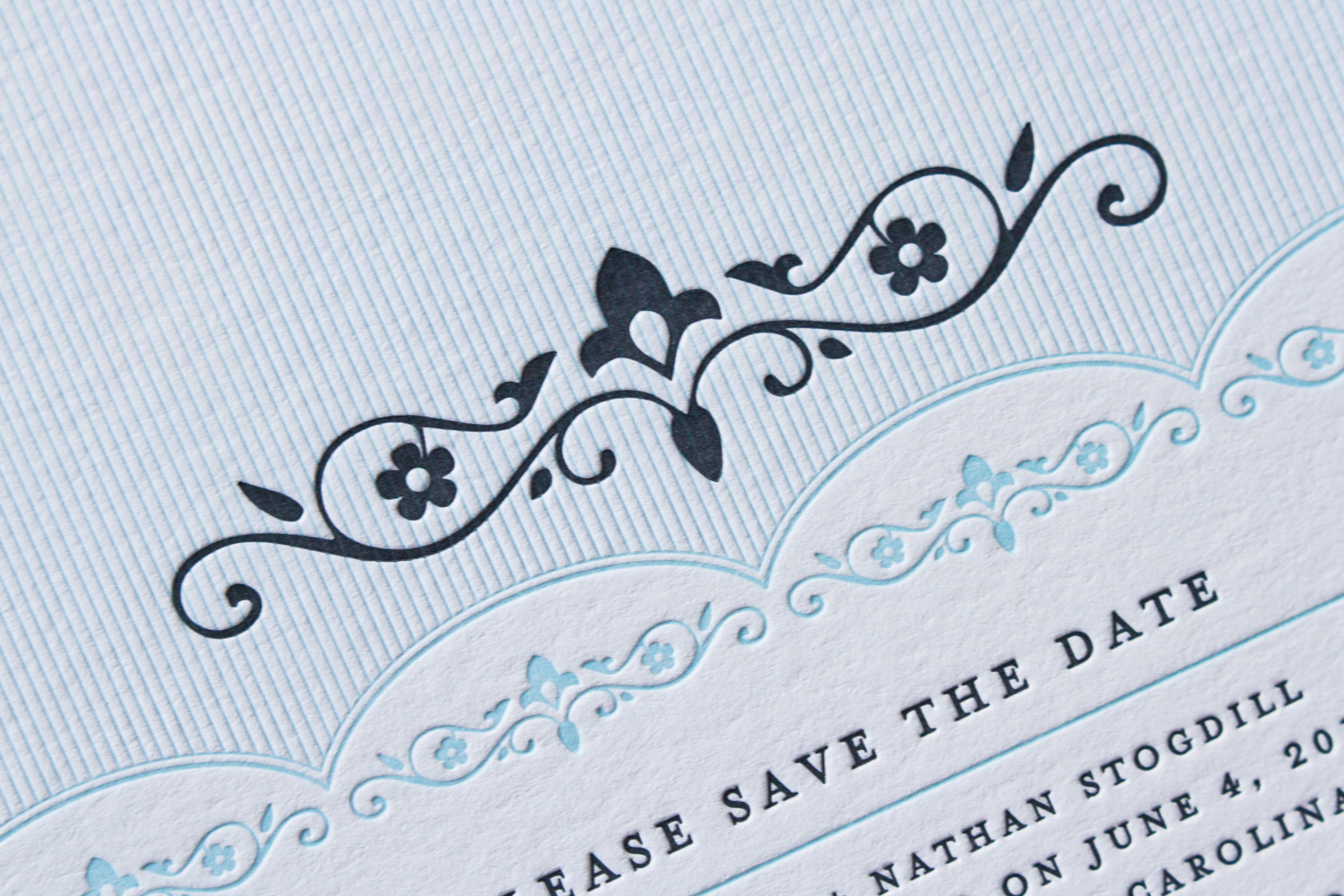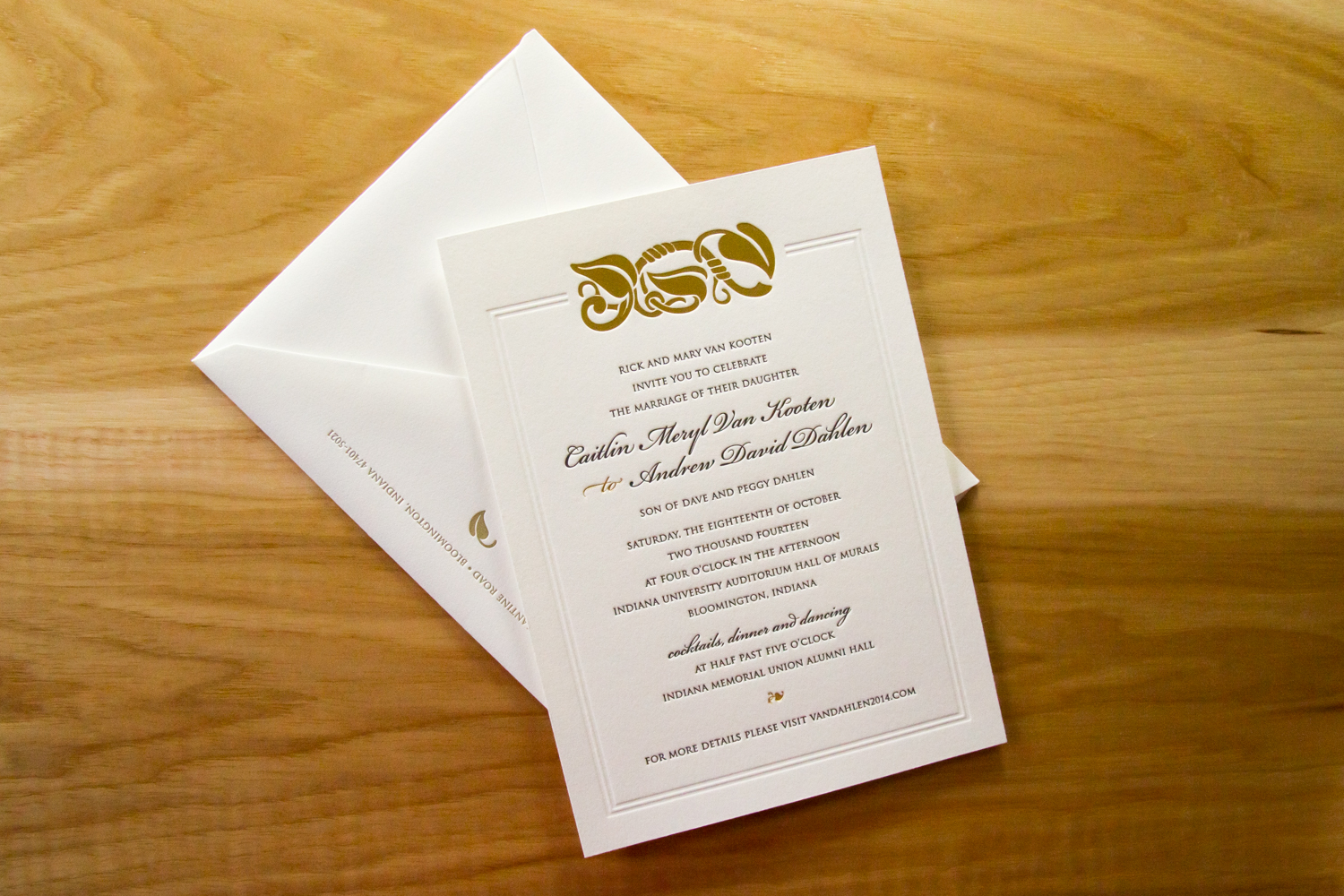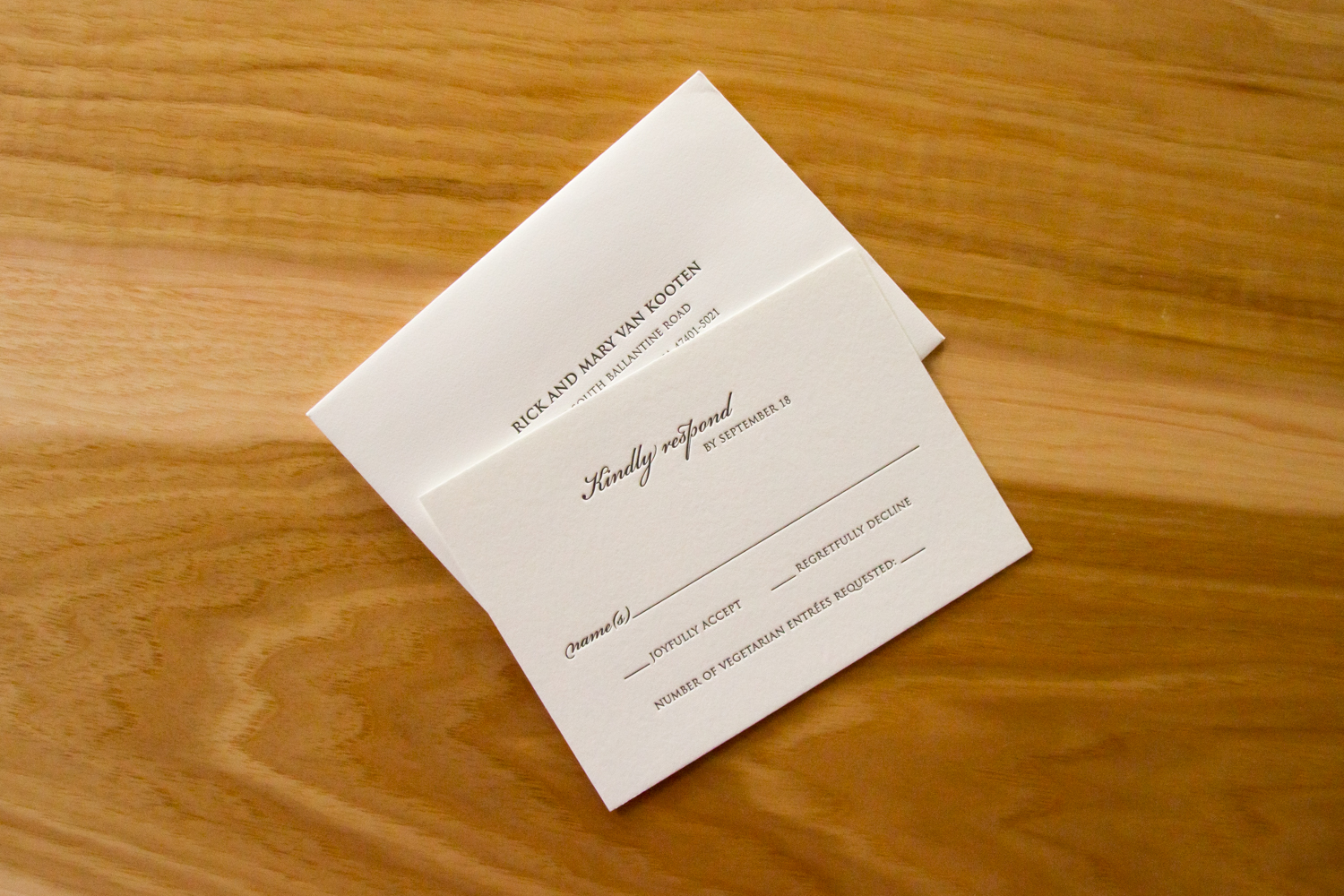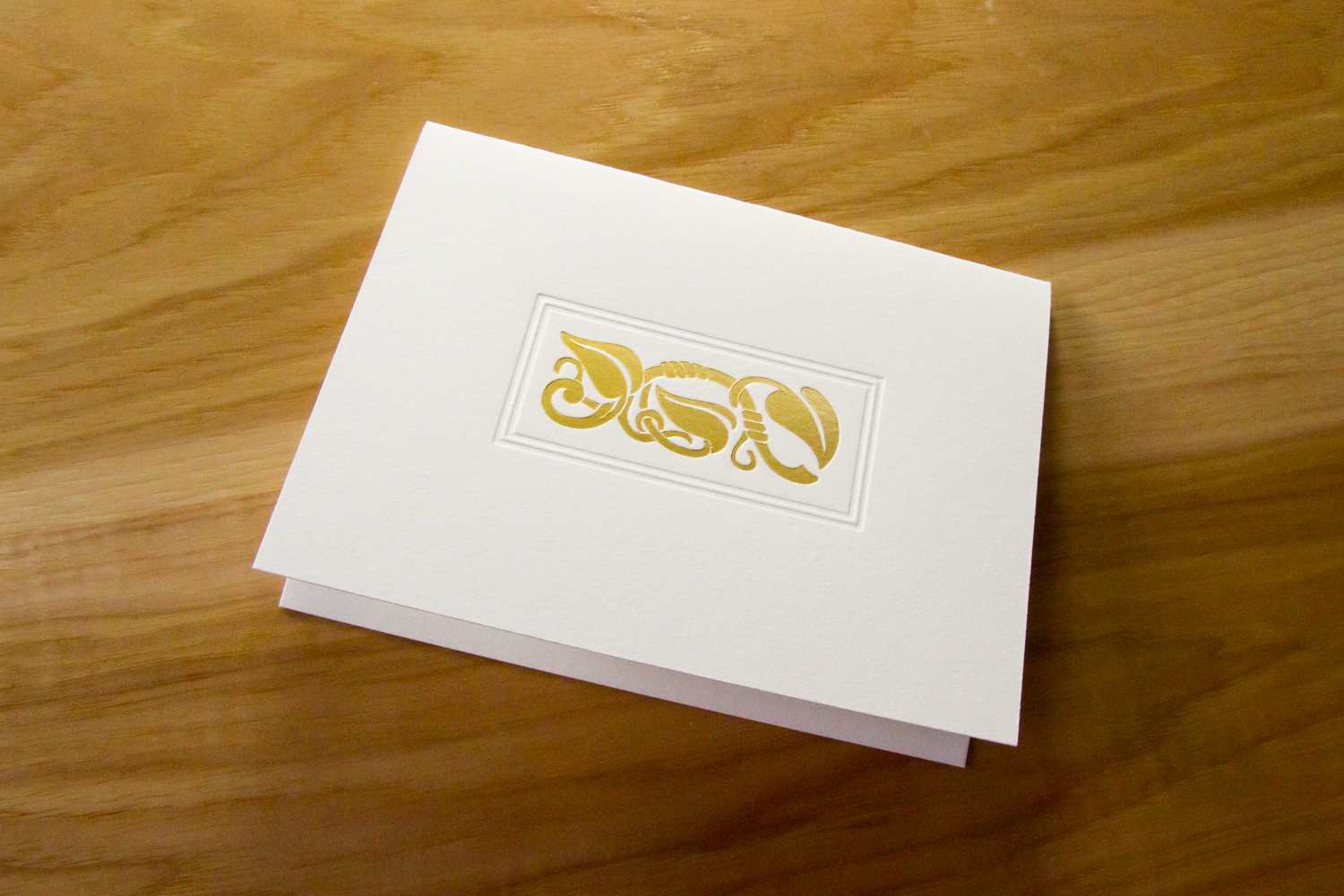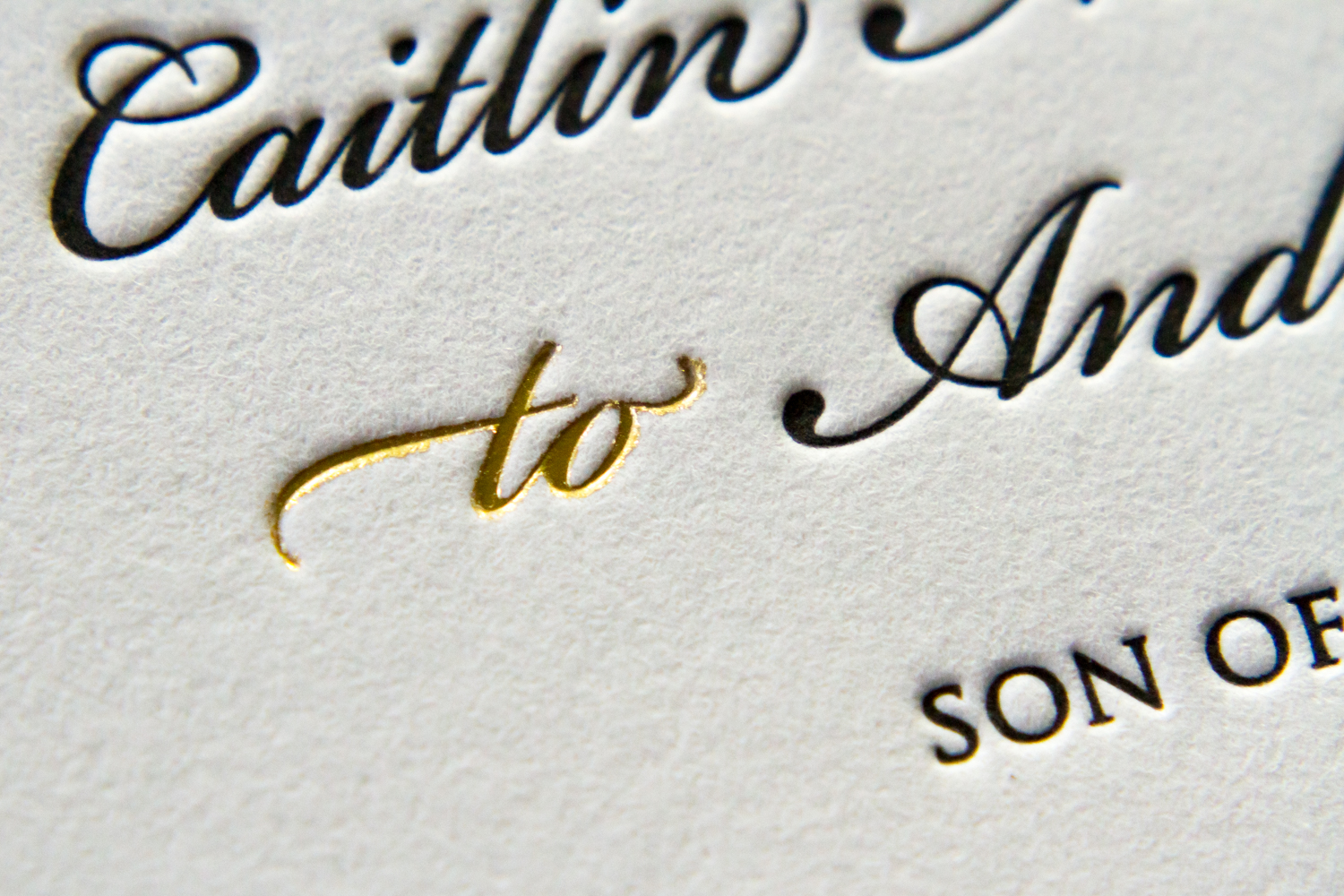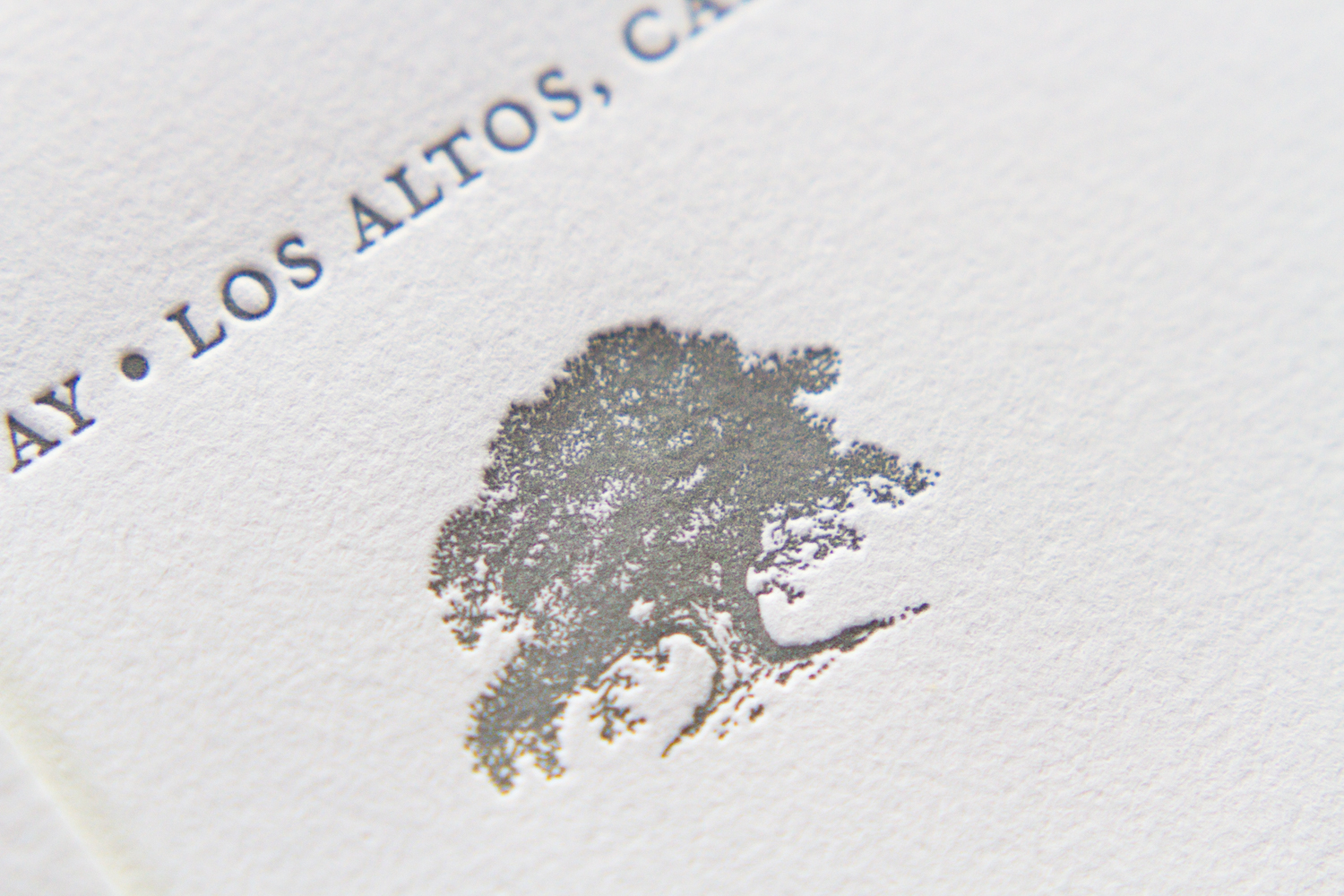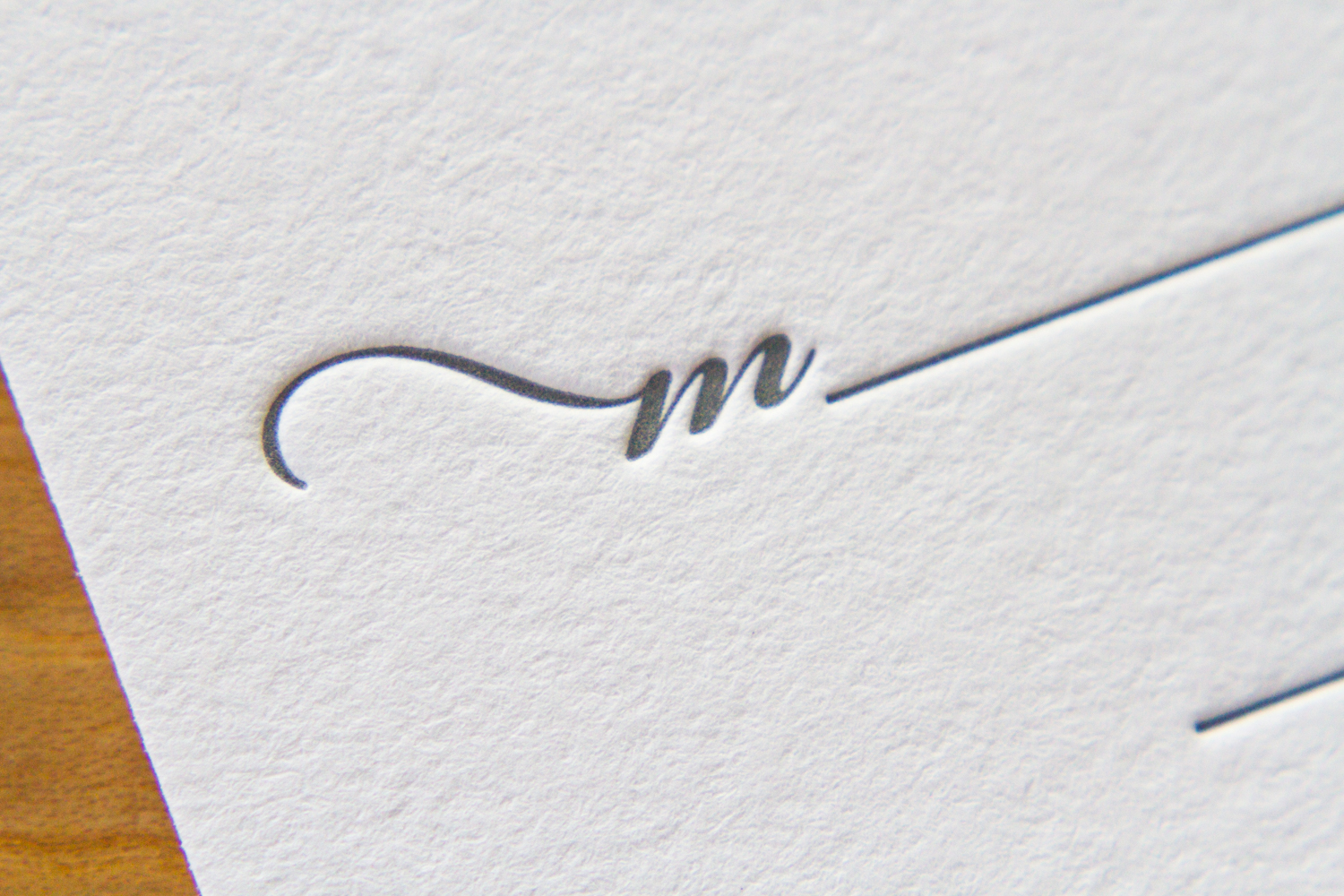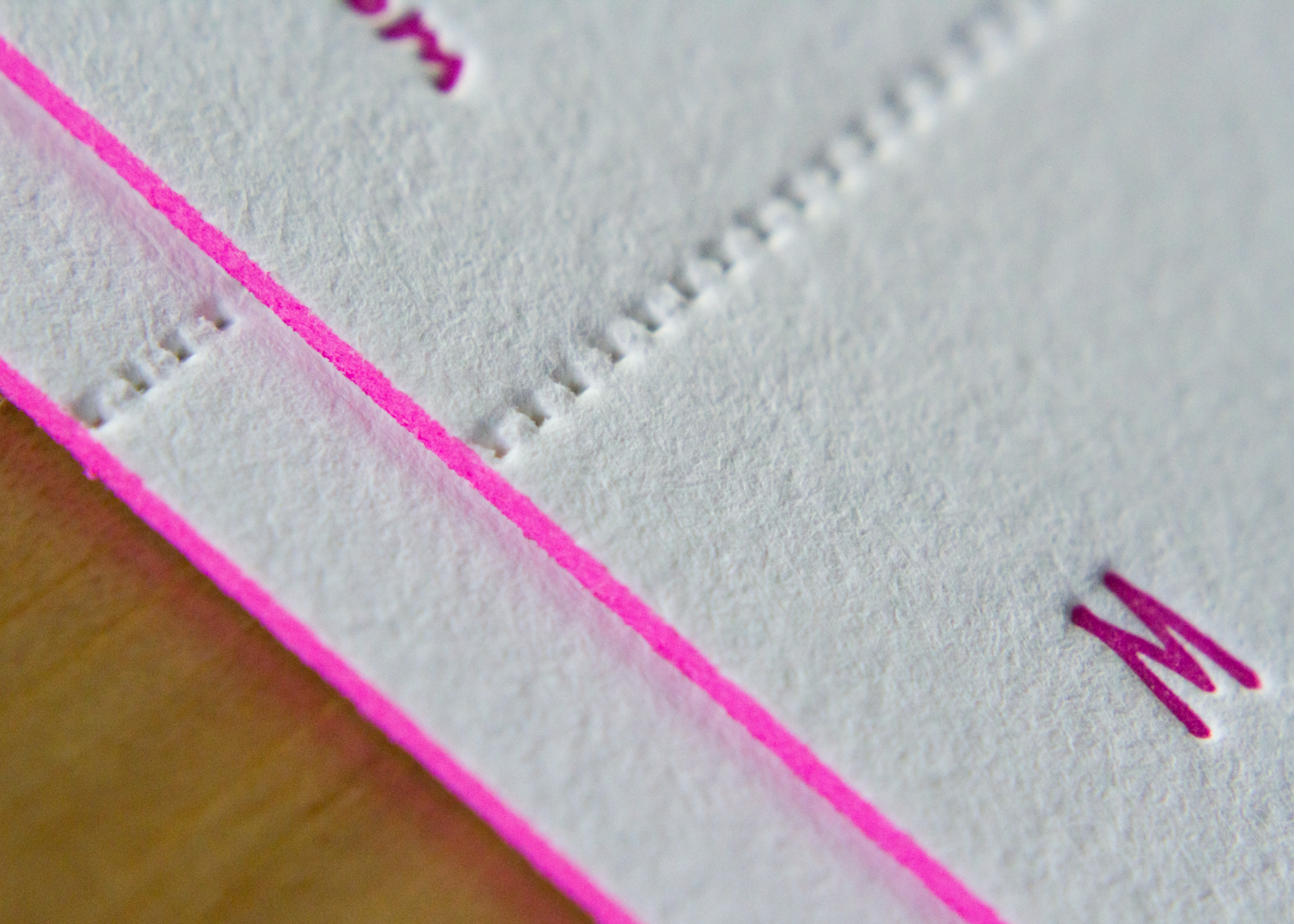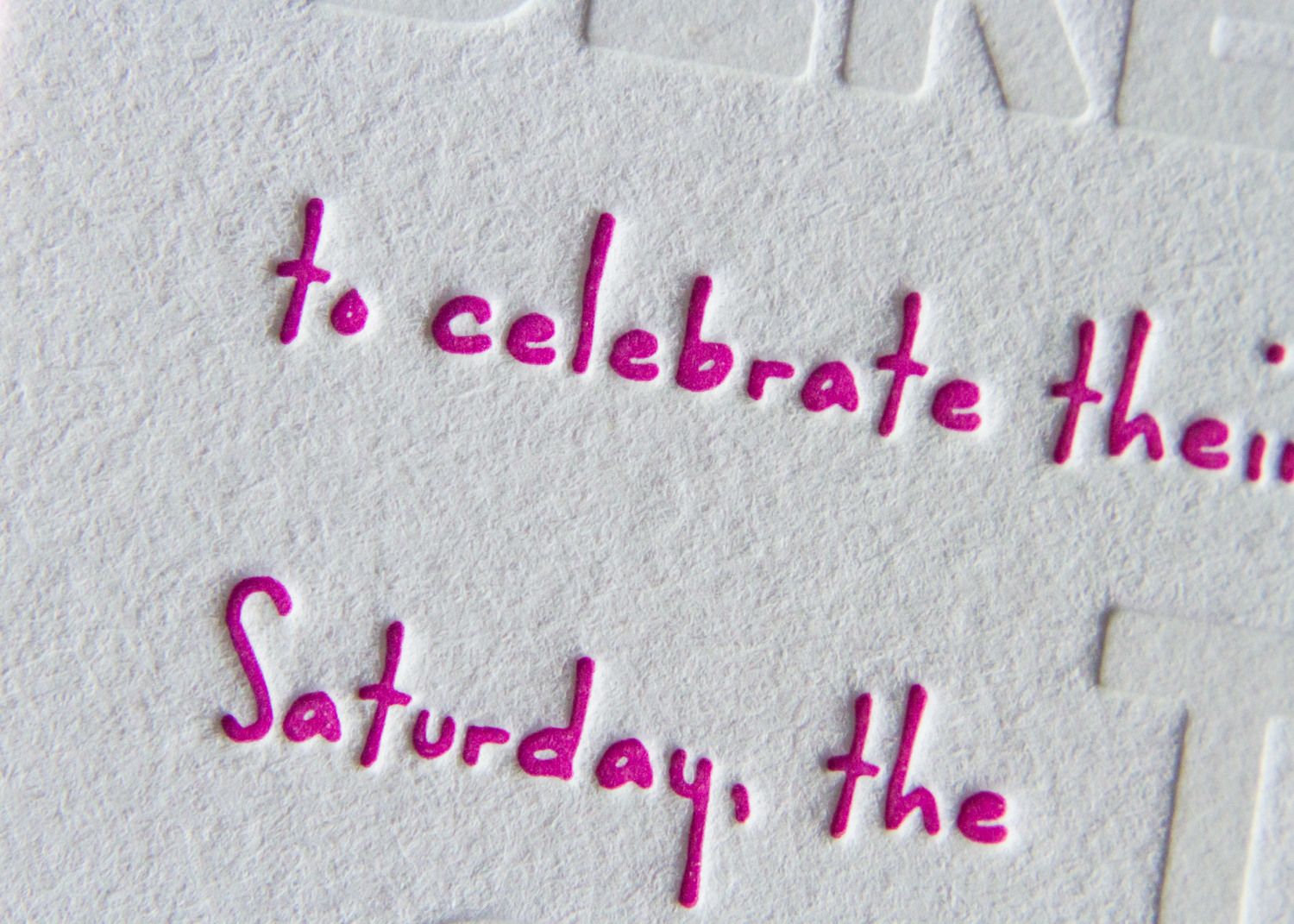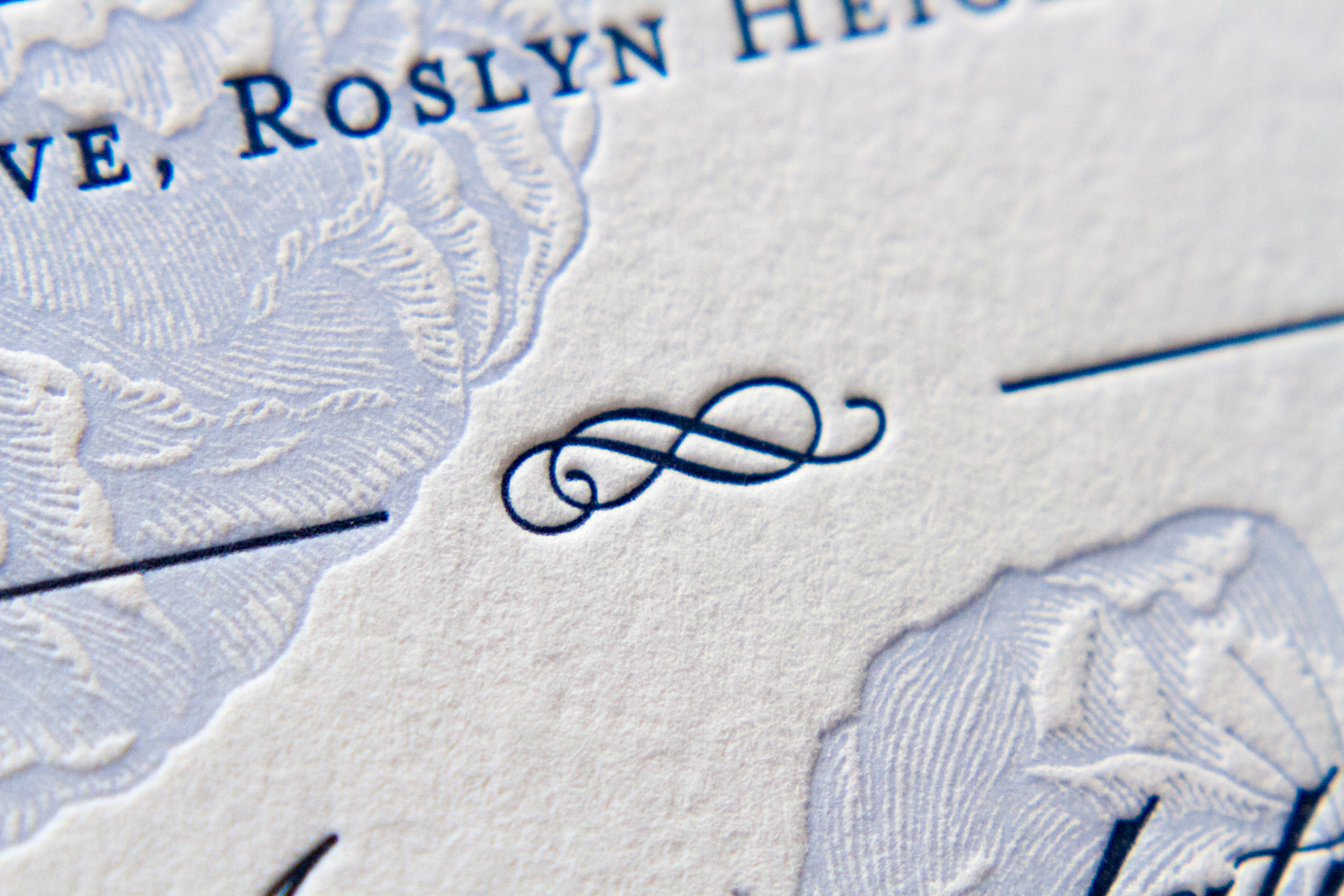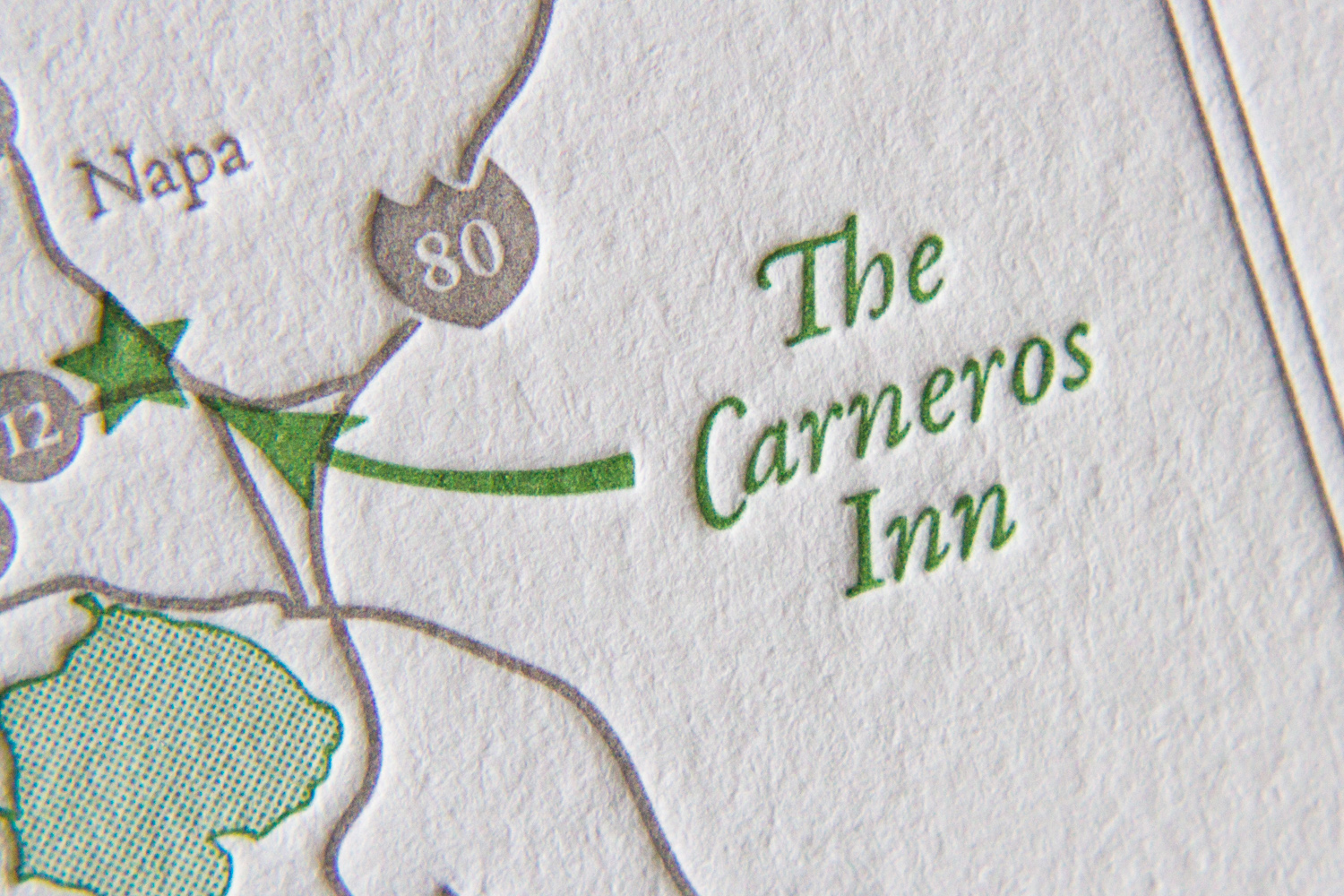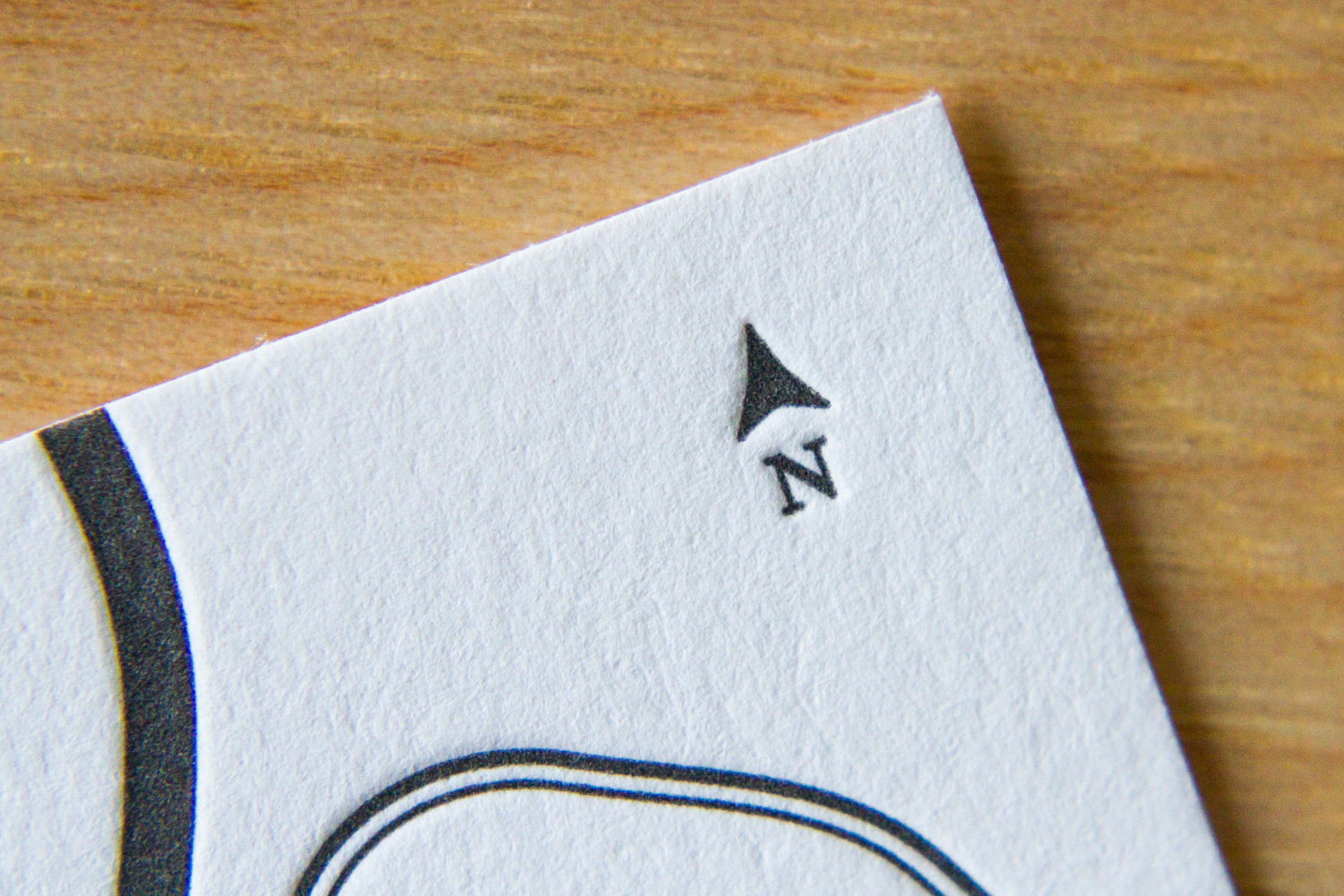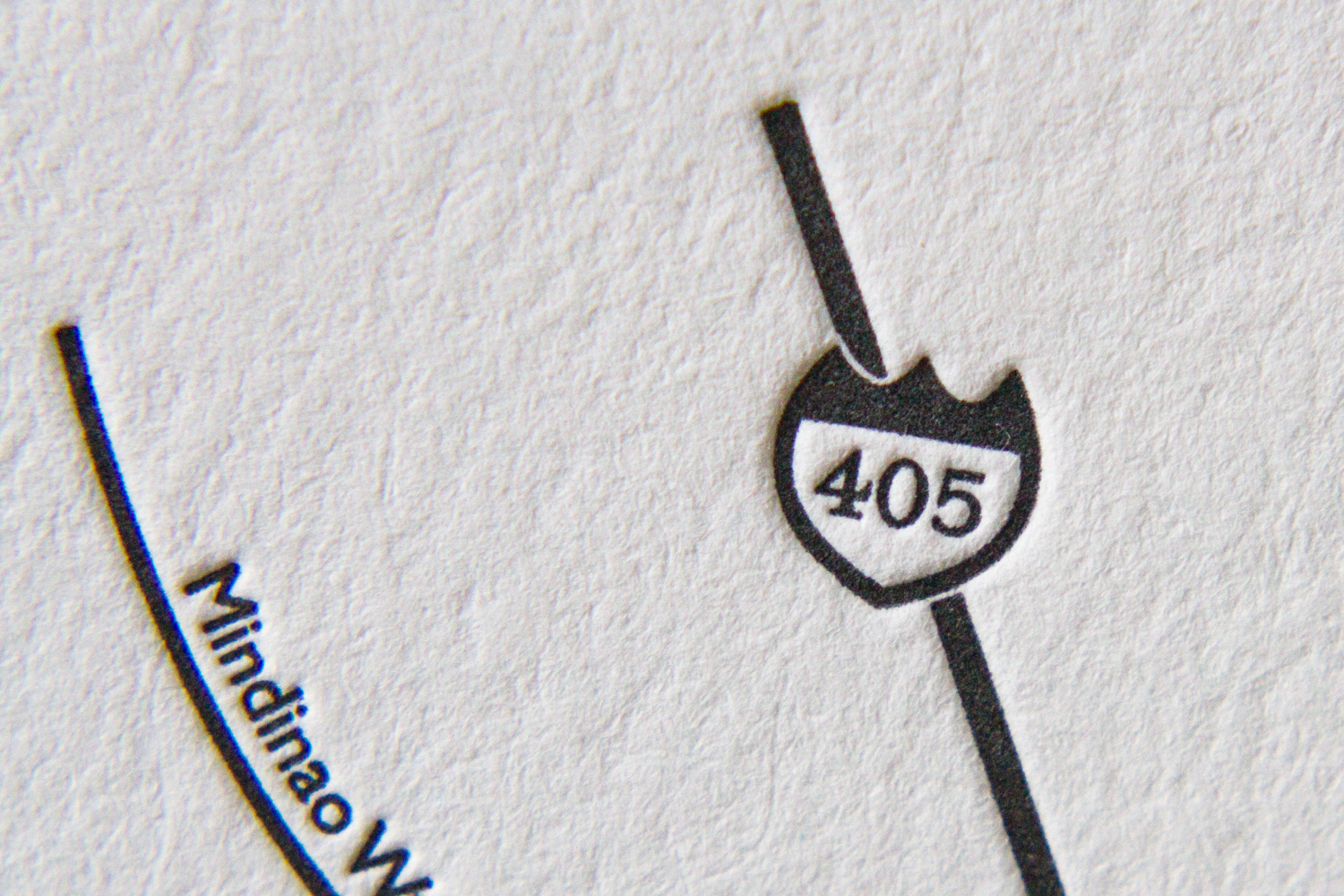This cheerful set was based on Parklife's Antiquity. It's one of our most popular designs. As we describe on the site, "The overlapping light and dark motifs give this invitation a sense of motion that's unlike anything else in our collection." This version has been modified a bit: the couple chose pearl white paper and a vertical orientation. By the way: we love it when people ask for modifications; our designs are a jumping-off point, but we want our clients to have exactly what they want.
This set had a fun combination of a traditional-looking calligraphic script paired with a modern, expressionistic contour drawing of leaves and garlands.
The thin parts of the script's stroke mirror the line art of the flora design. The two inks, midnight and peacock, compliment each other beautifully, and pop off the pearl white stock. The pieces are edge-painted in midnight.
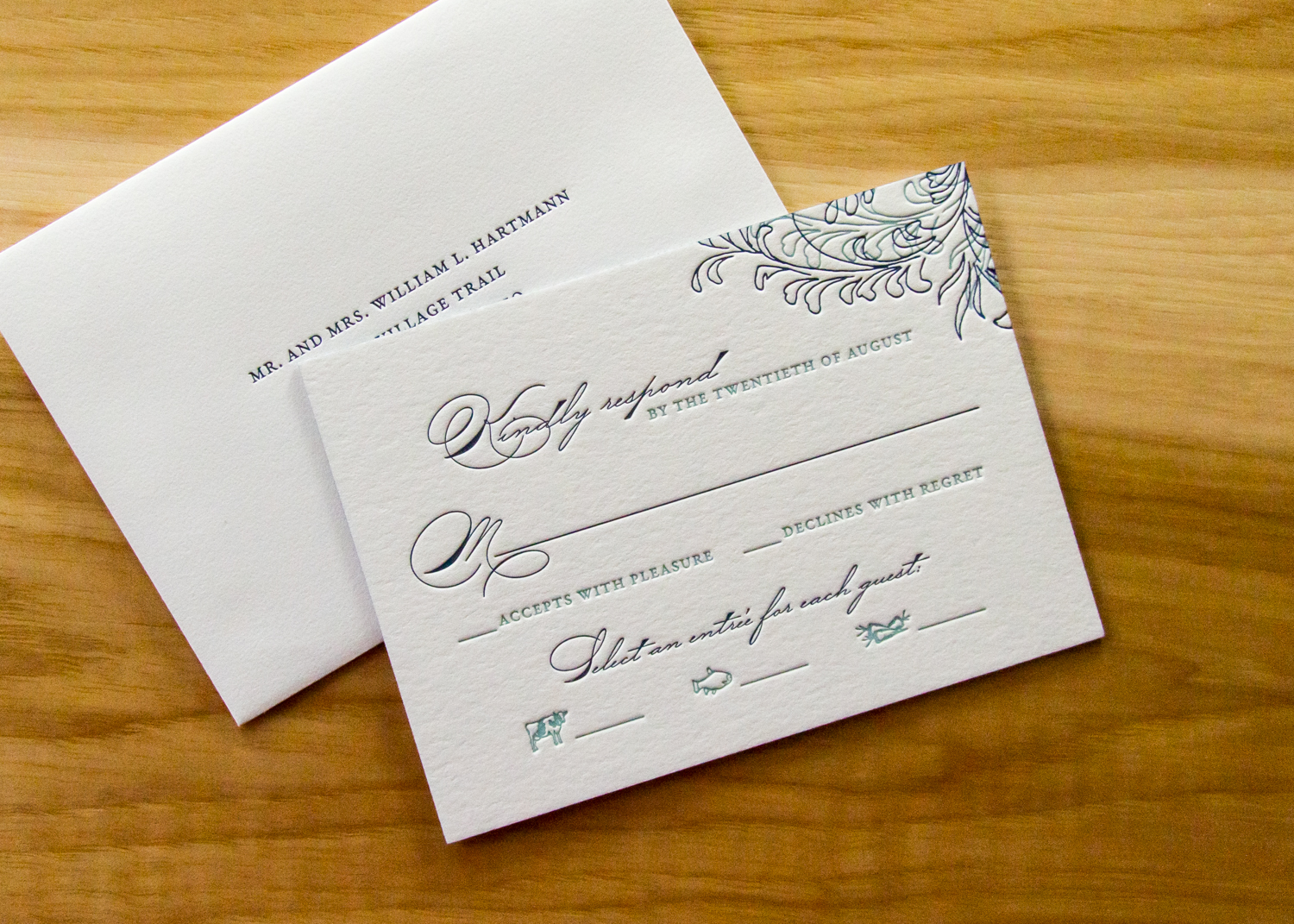
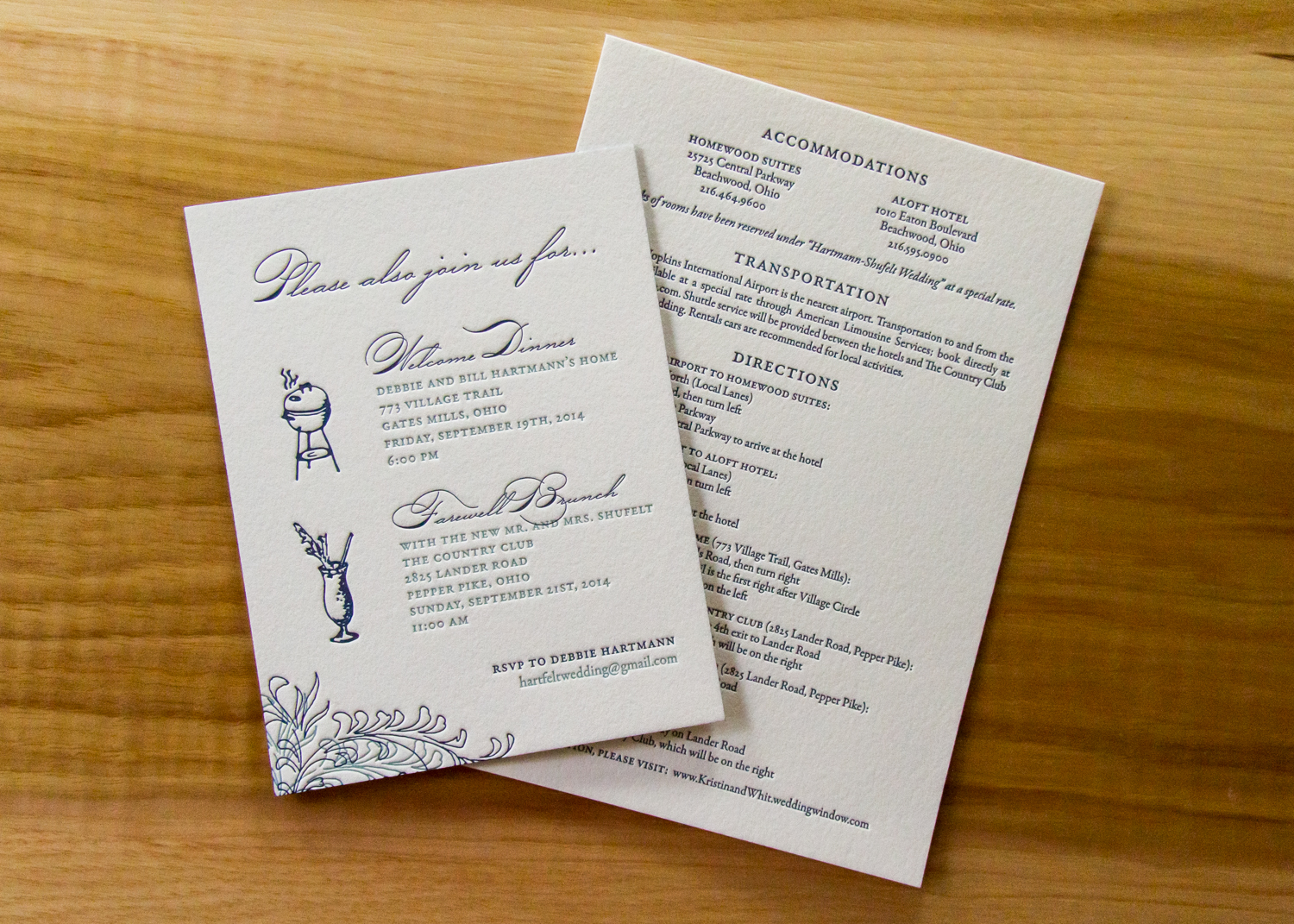
Along with the invitation and RSVP card and printed return envelope, the set included these two additional pieces. An information card detailed directions and accommodations, and a separate card invited guests to a welcome dinner and a farewell brunch.
The dancing vines weren't the only graphic elements of this set. The RSVP card used playful icons — a cow, a fish, some carrots — for guests to select either the beef, seafood, or vegetarian dinner options. And, the "additional events" card featured custom illustrations done by Parklife Press. For the welcome dinner: a homey, old-school charcoal barbecue; and for the farewell brunch: a bloody mary, complete with celery stalk.





